Radical Death and Early State Formation in the Ancient Near East
See also
Radical Death
For rolling updates, see https://twitter.com/deathradical
Project Update. Radical Death June 2020
As with the rest of the world, our project has been forced to adapt to the changing circumstances of the global COVID-19 pandemic. Unfortunately, many of our planned activities, including the workshop planned for Başur Höyük researchers at University College London and a special session at the British Institute at Ankara’s London headquarters, have had to be postponed. We look forward to being able to see our colleagues both at home and abroad again soon.
However, we have managed to connect with some of our colleagues remotely, attending a special seminar organised by Nicola Laneri, Giulio Palumbi, and Sylvie Müller Celka of CAMNES to celebrate the launch of a new edited volume: Constructing Kurgans: Burial Mounds and Funerary Customs in the Caucasus and Easter Anatolia During the Bronze and Iron Age, available from SANEM publications . There was a lively and informed discussion on burial ritual across a wide range of time and space from leading experts from several countries, and the live stream of the session is available to watch here . This was an excellent way to introduce the initial publication of the Early Bronze Age I cemetery at Başur Höyük, and to connect with colleagues who attended the forerunning CAMNES seminar in 2018.
We very much look forward to being able to join our colleagues from around the world once more, and to continuing our work in the isotope, aDNA, and osteoarchaeology labs, as soon as circumstances permit.
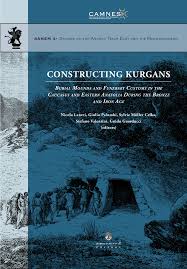
Publication:
Brenna R. Hassett, Haluk Sağlamtimur, and Metin Batihan. 2020. The Radical Death of the 4th Millennium: Contextualising Human Sacrifice at Başur Höyük. In: Nicola Laneri, Giulio Palumbi, and Sylvie Müller Celka (eds.) Constructing Kurgans: Burial Mounds and Funerary Customs in the Caucasus and Easter Anatolia During the Bronze and Iron Age . SANEM Series Vol. 4, CAMNES: Florence, IT.
Project Update. Radical Death December 2019
It has been a very successful six months for the Radical Death project, as various strands of analysis begin to coalesce. It has been a busy autumn, as different aspects of both the biomolecular research and the theoretical underpinning of such research in a much larger sense have been explored in seminars, conference papers, and panel discussions. Additionally, new opportunities for expanding the impact of research at Başur Höyük arrived with the awarding of a grant from the British Institute at Ankara. Field excavations at Başur Höyük itself were wrapped up in September of this year, marking the end of more than a decade of active excavation but hopefully the beginning of several new projects that will carry on the research.
Last spring, we began a new programme of finds-processing based training with a selected group of Ege University graduate students. Supported by a BIAA grant, the students learned how to process, preserve, and curate human remains. This project was designed to ensure that the skill set needed to preserve the research potential of the human remains from Başur was firmly embedded within the Prehistory Department at Ege, and within the archaeological practice that graduates of the department will develop in their careers. In order to emphasize the importance of integrating anthropological research best practice into archaeological research planning, the students were asked to present on different aspects of the skills they had learned at a special workshop, held in October of this year.
The workshop was a resounding success. It was extremely well attended by both students and research staff, and offered a rare chance to receive hands-on training in physical anthropological methods. Öznur Özmen Batıhan presented the importance of excavation technique and planning around anthropological research questions, explaining the 3d excavation recording techniques from Başur and demonstrating the damage to bones that improper tool use can cause. Pinar Dolmuş showed how critical finds processing is to the research process, showing attendees examples of bones that are best to sample for DNA, explaining cleaning techniques that are better for biomolecular sampling, and using a DinoLite digital video microscope to show some of the evidence for past lives that can come to light during this process. Muhammed Dolmuş had the difficult task of sharing with the audience the characteristics of bone that are easily identified, even by non-specialists. He made it clear that even without extensive training, archaeologists could be aware that subtle changes in morphology could indicate differences between males, females, and age groups. The students each gave outstanding talks, and the workshop was actually so successful it will be repeated in the spring due to demand.
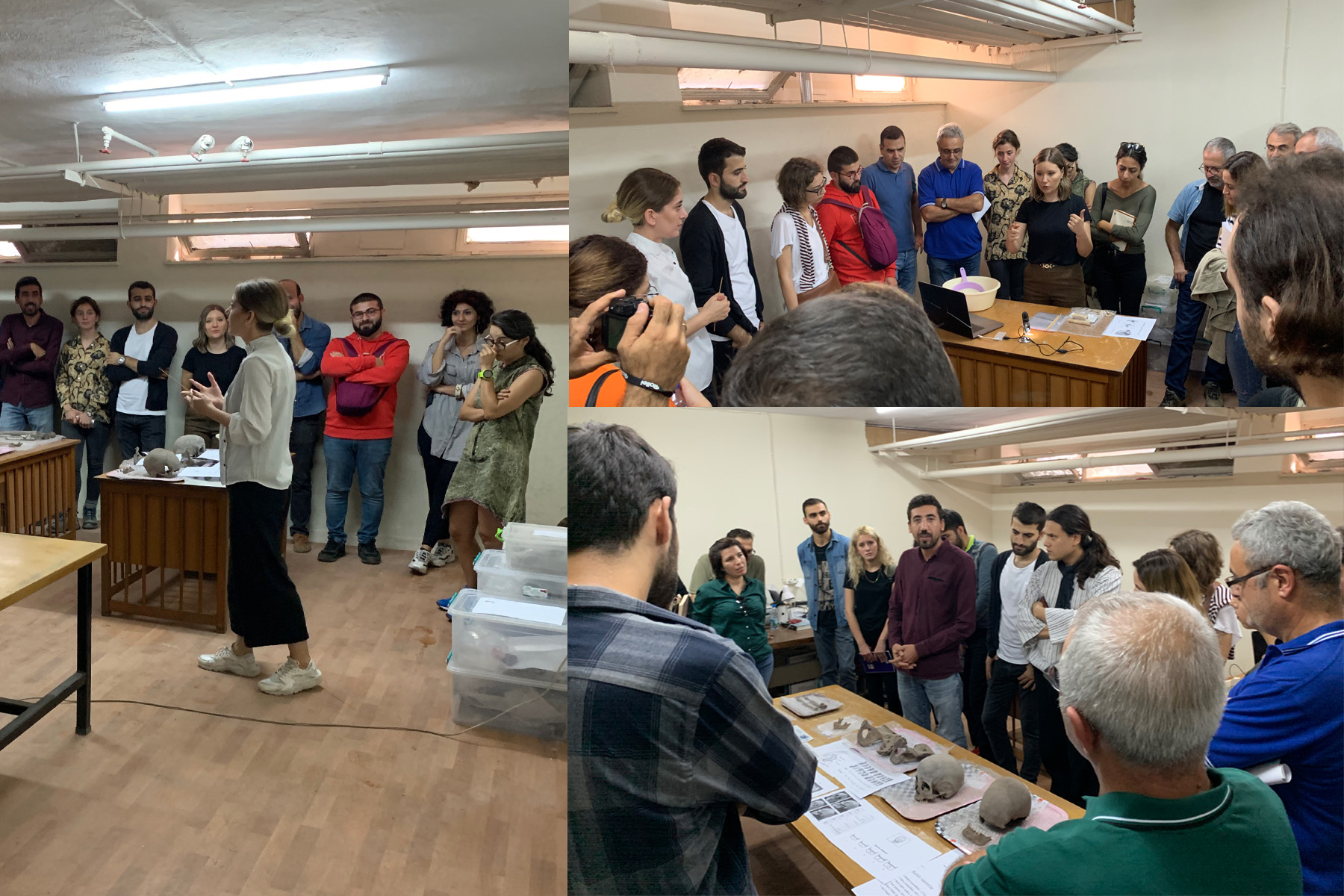
Clockwise from left: Öznur Özmen Batıhan explains excavation technique, Pinar Dolmuş explains finds processing, and Muhammed Dolmuş (in purple) explains some basic concepts in physical anthropology.
In November, the first results from the isotopic investigations were reported by Suzanne Pilaar Birch at the American Society for Oriental Research (ASOR) meeting in San Diego . This included results from the strontium, carbon, and nitrogen stable isotope analysis of individuals at the site. A local baseline value for strontium was established using animal bones from Basur, and thirty-six individuals were sampled for 87/86Sr across burial types and age/sex groups, and Pilaar Birch found that some individuals had a more local signature than others. This will be explored in more detail in the planned publication of the isotopic results. We plan to produce a publication with a detailed assessment of dietary and geographic origin indicators, differences between age and sex groups, and differences between the pit, cist, and semi-cist graves as well as the mass graves in the next year.
A important strand of our project concerns the analysis of aDNA from human remains at Başur Höyük, which is underway at the Natural History Museum. The interpretation of genetic sequences in relation to archaeological data is a contentious and rapidly developing field of research, with widely divergent views on appropriate scales of analysis. To that end, we also wish to go beyond the specific analysis of our samples, to engage with wider methodological and theoretical debates, and ensure that our approach is in line with best practice, and cutting-edge approaches. We have begun to do this both through our research, and through seminars drawing on a rich pool of expertise in the London area. For example, David Wengrow, as part of the UCL Institute of Archaeology Seminar Series organised "Reconciling material culture and genetic data in prehistory: a panel debate" with not only Brenna Hassett and Ian Barnes from the Başur Höyük team, but also Stephen Shennan, Tom Booth and Ulrike Sommer. This lively discussion opened up key themes in paleogenomic research and its integration into archaeology, taking Reide, Hoggard, and Shennan's 2019 paper on this topic in Nature as starting point.
The discussion raised themes that are likely to be important in our larger planned panel discussion and debate on the major issues facing the use of archaeological palaeo-genomics to be held at the Theoretical Archaeology Group (TAG) UK meeting at UCL December 16-18th. This will be a high profile session, bringing together leading figures in evolutionary genetics with archaeologists concerned with the interpretation of genomic data and its presentation to the public. Summary and list of participants here:
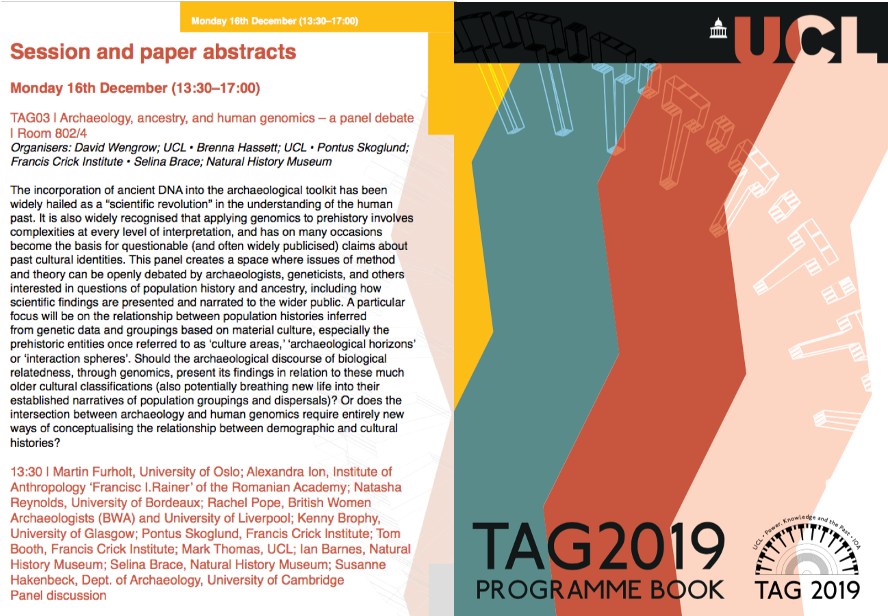
Finally, Haluk Saglamtimur has been awarded a substantial TUBITAK grant for the project "Investigation of Cultural Change and Interregional Interaction in Upper Tigris Region at the end of the 4th and the beginning of the 3rd Millennium BC in the light of data from Başur Höyük". This new project will take the research begun during excavation into the next phase of understanding both regional context and material culture through specialist analyses. Brenna Hassett is an advisor on this new project as well as Emma Baysal of Trakya University, who is undertaking the expert analysis of the extraordinary bead finds from the site. Graduate students Metin Batıhan and Inan Aydoğan will continue to assist in the research.
As we move into the next year, we wish our friends and collaborators a happy and prosperous 2020, and look forward to the discoveries to come in the new year.
Project Update. Radical Death June 2019
We are extremely pleased to announce that Dr Hassett has been awarded a British Institute at Ankara (BIAA) study grant to extend the impact of the Radical Death project to include conservation and finds training for graduate students and undergraduates at Ege University. The BIAA has supported several aspects of research at the site of Başur Höyük, and this marks a new stage: using the material culture of Başur Höyük to train the next generation of archaeologists.
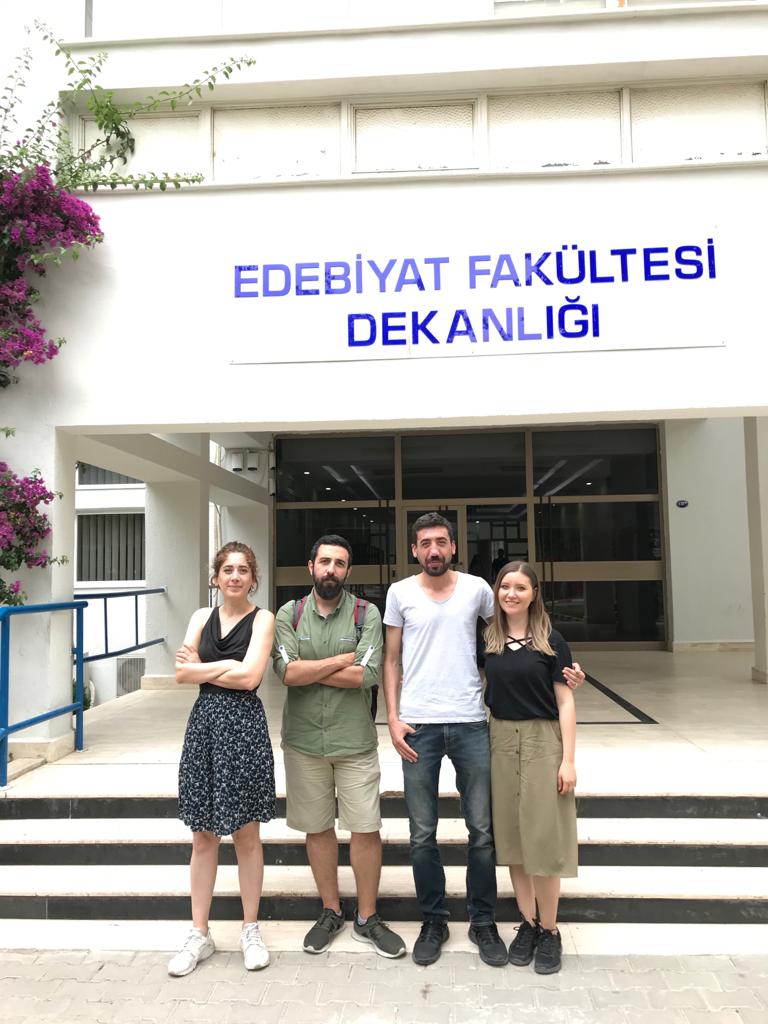
The Radical death project welcomes Öznur Özmen Batıhan, Muhammed Dolmuş, Pinar Dolmuş and Gençay Öztürk to the Anthropology Team. These four Ege University graduate students have been selected to take part in intensive training in the conservation and processing of archaeological human remains, with special attention to issues such as storage and DNA preservation. This is a critical skill that is currently not part of the curriculum at either undergraduate or graduate level, and will offer the best chance of preserving the remains for future research. In order to cement this training, the graduate students will take an active part in an ‘Anthropology Open Day’, leading a workshop on finds processing as part of a larger seminar on the research potential of physical anthropology (not currently offered at degree level). This is scheduled for the beginning of Autumn term 2019, and will provide continuity in curation skills needed to maintain this important resource as well as an interest in archaeological science and conservation.
The last six months of work on the Radical Death project have taken place in three different countries: stable isotope analysis at University of Georgia Athens, aDNA analysis at the Natural History Museum, London, and of course, ongoing laboratory analysis at Ege University.
From the stable isoptope strand of research Dr Pilaar Birch at UGA reports that while preservation is not ideal, approximately half of the samples to be sampled for carbon and nitrogen isotopes have been successful, and a new phase of re-sampling will begin this summer to try to improve this result. The tooth samples have been drilled and are ready for tests of strontium and oxygen isotopic ratios. Dr Pillar Birch will present her research on the stable isotopes at Başur Höyük in an invited contribution to a special session at the 2019 American Schools of Oriental Research (ASOR) Annual Meeting titled ‘Stable Isotope Insights into Radical Death and Early State Formation in the Ancient Near East: Preliminary Results from Başur Höyük, Siirt, Turkey’.
Dr Apaydin has begun our outreach, education, and impact work. He will be working on potential effective heritage engagement strategies using Başur Höyük excavation materials. He is developing educational tools in English and Turkish to engage local communities, including ethnic minority groups, in southeast Turkey.
Prof Barnes and Dr Brace have begun work on extracting and analysing the ancient DNA from several locations across the EBA cemetery. The material is now in the ancient DNA lab and is in the analytical pipeline. Although these samples are from a hot site, where molecular recovery may be limited, they are optimistic that if there is any DNA present, it should be recoverable following the protocol that the NHM lab has developed for working with specimens from tropical burial sites.
Project Update: Radical Death. December, 2018
The Radical Death project investigates the introduction of radical death and burial practices using the lens of excavations at Basur Hoyuk on the Upper Tigris region at the break of the 3rd millennium BC. The AHRC funded project kicked off with the publication of the retainer burial discovered on site in the journal Antiquity in late June of 2018 (Hassett & Saǧlamtimur, 2018). This received a gratifying amount of attention in the press, both in Turkey and abroad, with English language coverage in Newsweek, CNN, the Daily Mail, Daily Sabah, Live Science, and other outlets, and Turkish language coverage in Milleyet, Haberturk, and many other daily news outlets. Co-I Dr Hassett also met with the Rector of Ege University along with excavation director Prof. Saǧlamtimur, and received a message of support for the continued cooperation of Ege University and the project partners.
Work by Dr Hassett began in July of 2018 on the large-scale digitisation of the mass death pit that is at the heart of the Radical Death research. The comprehensive photo archive collected at the time of excavation of the death pit was organised to form the base of two separate digital reconstructions: firstly, the three dimensional spatial database of individual remains that will form the backbone of later analyses; and secondly, for the photogrammetric reconstruction of different stages of excavation of the entire mass burial context. Preparation for making these reconstructions includes digitizing and organizing the paper records from excavation, site plans, context plans, individual skeleton plans, and other finds information along with the digital photo archive.
The reconstruction of the burial context also includes a laboratory element, as the death pit contains the remains of over fifty individuals aggressively crammed into a small, 3 x 2 x 1.5 meter pit. In order to identify individuals from the very complicated commingled burial, all identified skeletal elements were examined during two months of concentrated lab work at Ege University (Figure 1). Elements were laid out in two gridded levels according to their location at discovery. This time-consuming but ultimately very useful process led to the identification of isolated elements of skeletons (e.g. feet, arms, jaws) being re-associated with individuals using a combination of age and size markers. It also allowed for re-evaluation of the demography of the death pit, which is currently being re-assessed using a combination of traditional bioarchaeological methods and statistical assessments of sexual dimorphism.
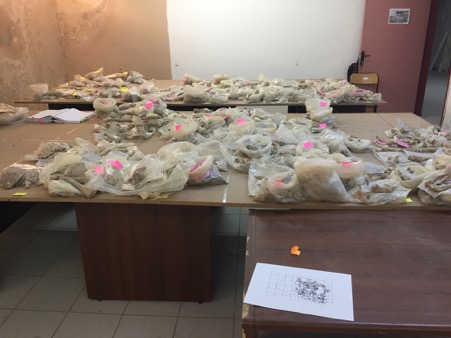
Figure 1. Two-level reconstruction of Grave 16, mass death pit.
The collaborative efforts of the Radical Death project partners also kicked off this summer, with PI Prof. Wengrow coordinating the multi-institution aspects of the grant, particularly the distribution of resources. With the final disbursement of the project funds to the Natural History Museum, organisation of the aDNA research strand of the project with Prof. Barnes and Dr Brace will be ready to begin, with a timeline for analysis leading towards results allowing comment on the population of the mass death pit in Autumn of 2019. Funds were also released to the University of Georgia at Athens, allowing work on the stable isotope strand of the project to begin. Dr Hassett succcesfully transported the final export samples to UGA, where she and project partner Dr Pilaar Birch were able to begin the initial phases of analysis (Figure 2). Dr Pilaar Birch devised a targeted program of single and multi-individual sampling of stable isotope rations for carbon, nitrogen, oxygen, strontium and potentially lead which should produce results, also in Autumn of 2019, allowing us to comment on population mobility, relationships, and diet.
